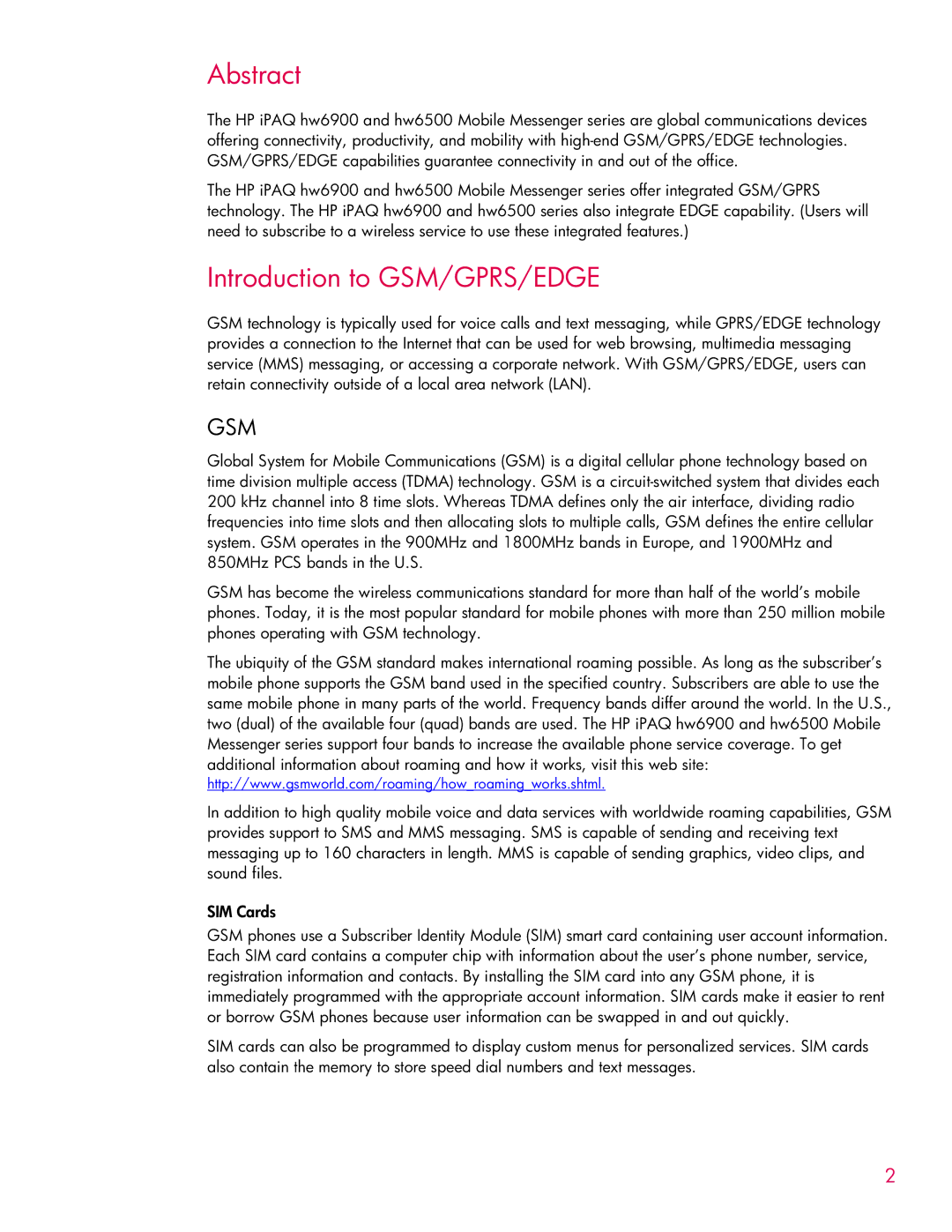Abstract
The HP iPAQ hw6900 and hw6500 Mobile Messenger series are global communications devices offering connectivity, productivity, and mobility with
The HP iPAQ hw6900 and hw6500 Mobile Messenger series offer integrated GSM/GPRS technology. The HP iPAQ hw6900 and hw6500 series also integrate EDGE capability. (Users will need to subscribe to a wireless service to use these integrated features.)
Introduction to GSM/GPRS/EDGE
GSM technology is typically used for voice calls and text messaging, while GPRS/EDGE technology provides a connection to the Internet that can be used for web browsing, multimedia messaging service (MMS) messaging, or accessing a corporate network. With GSM/GPRS/EDGE, users can retain connectivity outside of a local area network (LAN).
GSM
Global System for Mobile Communications (GSM) is a digital cellular phone technology based on time division multiple access (TDMA) technology. GSM is a
GSM has become the wireless communications standard for more than half of the world’s mobile phones. Today, it is the most popular standard for mobile phones with more than 250 million mobile phones operating with GSM technology.
The ubiquity of the GSM standard makes international roaming possible. As long as the subscriber’s mobile phone supports the GSM band used in the specified country. Subscribers are able to use the same mobile phone in many parts of the world. Frequency bands differ around the world. In the U.S., two (dual) of the available four (quad) bands are used. The HP iPAQ hw6900 and hw6500 Mobile Messenger series support four bands to increase the available phone service coverage. To get additional information about roaming and how it works, visit this web site:
http://www.gsmworld.com/roaming/how_roaming_works.shtml.
In addition to high quality mobile voice and data services with worldwide roaming capabilities, GSM provides support to SMS and MMS messaging. SMS is capable of sending and receiving text messaging up to 160 characters in length. MMS is capable of sending graphics, video clips, and sound files.
SIM Cards
GSM phones use a Subscriber Identity Module (SIM) smart card containing user account information. Each SIM card contains a computer chip with information about the user’s phone number, service, registration information and contacts. By installing the SIM card into any GSM phone, it is immediately programmed with the appropriate account information. SIM cards make it easier to rent or borrow GSM phones because user information can be swapped in and out quickly.
SIM cards can also be programmed to display custom menus for personalized services. SIM cards also contain the memory to store speed dial numbers and text messages.
2
